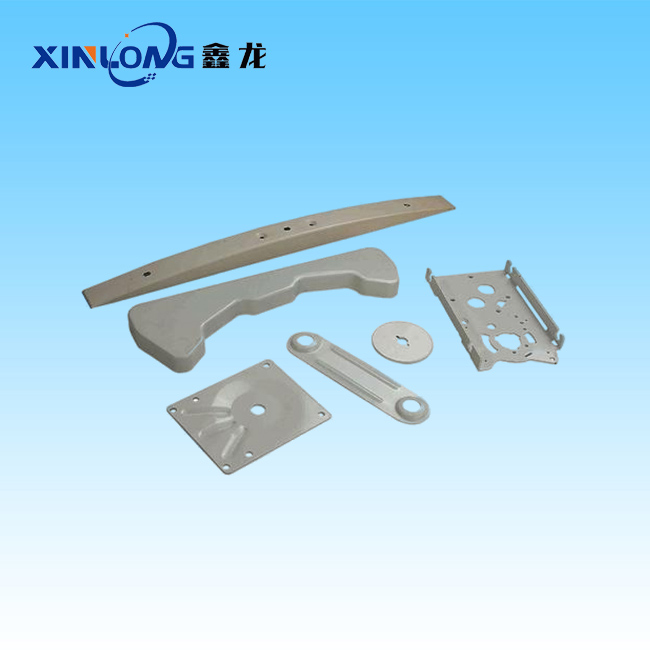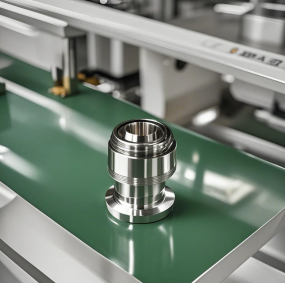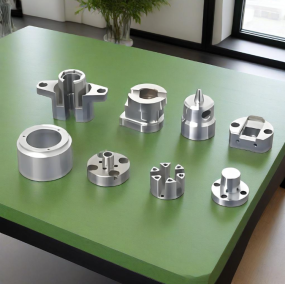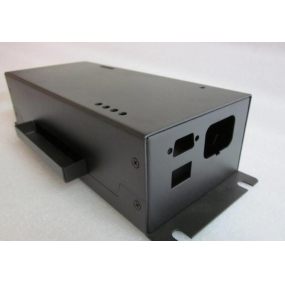1. Sheet Metal Stamping processing dimensional tolerance and accuracy grade Dimensional tolerance: Dimensional tolerance refers to the allowable deviation range, usually expressed by tolerance grades, such as IT level (IT6, IT7, etc.). These tolerance grades specify the upper and lower limits of the size of the machined parts to ensure that the size of the machined parts is within the allowable range. Accuracy grades: The accuracy grades of sheet metal parts processing are divided into a level, b level and c level. These grades correspond to international standards such as JISB2201, JISB2202 and JISB2203. Different accuracy grades correspond to different dimensional tolerance requirements.  II. Sheet metal stamping processing specific dimensional accuracy parameter parallelism: measure the degree of parallelism between the surface of the object and the reference plane. Common parallelism requirements such as 0.05mm/100mm. Verticality: Describes the degree of verticality between the surface of the object and the reference plane. Common verticality requirements such as 0.1mm/100mm. Roundness: Used to describe the roundness between the surface of the object and the reference axis. Common roundness requirements such as 0.05mm. Hinge Size: Describes the diameter and hole spacing of the hinge hole. Common hinge size requirements such as 0.1mm. Surface Accuracy Requirements for Sheet Metal Stamping: Surface finish refers to the flatness and smoothness of the surface of the object. It is commonly expressed by Ra value, such as 0.8 microns. Surface flatness: Measures the flatness of the surface of the object. Common surface flatness requirements such as 0.1mm/100mm. Four, sheet metal stamping processing linearity and angle measure straightness: used to describe the flatness of a straight line, usually using 0.1mm/100mm or less requirements. Curvature: used to describe the smoothness of a curve, also usually using 0.1mm/100mm or less requirements. Angle measure: used to describe the precision of the angle, common angle requirements such as 0.1 degrees. Five, other standard conditions for sheet metal stamping processing The dimensional tolerance of sheet metal parts should comply with national standards such as GB/T 9124-1988 "Shape and Position Tolerances". There are also corresponding standard requirements for the curvature of sheet metal, the distance of the opening when bending, and the thickness treatment of sheet metal.
II. Sheet metal stamping processing specific dimensional accuracy parameter parallelism: measure the degree of parallelism between the surface of the object and the reference plane. Common parallelism requirements such as 0.05mm/100mm. Verticality: Describes the degree of verticality between the surface of the object and the reference plane. Common verticality requirements such as 0.1mm/100mm. Roundness: Used to describe the roundness between the surface of the object and the reference axis. Common roundness requirements such as 0.05mm. Hinge Size: Describes the diameter and hole spacing of the hinge hole. Common hinge size requirements such as 0.1mm. Surface Accuracy Requirements for Sheet Metal Stamping: Surface finish refers to the flatness and smoothness of the surface of the object. It is commonly expressed by Ra value, such as 0.8 microns. Surface flatness: Measures the flatness of the surface of the object. Common surface flatness requirements such as 0.1mm/100mm. Four, sheet metal stamping processing linearity and angle measure straightness: used to describe the flatness of a straight line, usually using 0.1mm/100mm or less requirements. Curvature: used to describe the smoothness of a curve, also usually using 0.1mm/100mm or less requirements. Angle measure: used to describe the precision of the angle, common angle requirements such as 0.1 degrees. Five, other standard conditions for sheet metal stamping processing The dimensional tolerance of sheet metal parts should comply with national standards such as GB/T 9124-1988 "Shape and Position Tolerances". There are also corresponding standard requirements for the curvature of sheet metal, the distance of the opening when bending, and the thickness treatment of sheet metal.
Hello! Welcome to EMAR's website!
 English
English » »
» »
 Spanish
Spanish Arabic
Arabic French
French Portuguese
Portuguese Belarusian
Belarusian Japanese
Japanese Russian
Russian Malay
Malay Icelandic
Icelandic Bulgarian
Bulgarian Azerbaijani
Azerbaijani Estonian
Estonian Irish
Irish Polish
Polish Persian
Persian Boolean
Boolean Danish
Danish German
German Filipino
Filipino Finnish
Finnish Korean
Korean Dutch
Dutch Galician
Galician Catalan
Catalan Czech
Czech Croatian
Croatian Latin
Latin Latvian
Latvian Romanian
Romanian Maltese
Maltese Macedonian
Macedonian Norwegian
Norwegian Swedish
Swedish Serbian
Serbian Slovak
Slovak Slovenian
Slovenian Swahili
Swahili Thai
Thai Turkish
Turkish Welsh
Welsh Urdu
Urdu Ukrainian
Ukrainian Greek
Greek Hungarian
Hungarian Italian
Italian Yiddish
Yiddish Indonesian
Indonesian Vietnamese
Vietnamese Haitian Creole
Haitian Creole Spanish Basque
Spanish Basque












